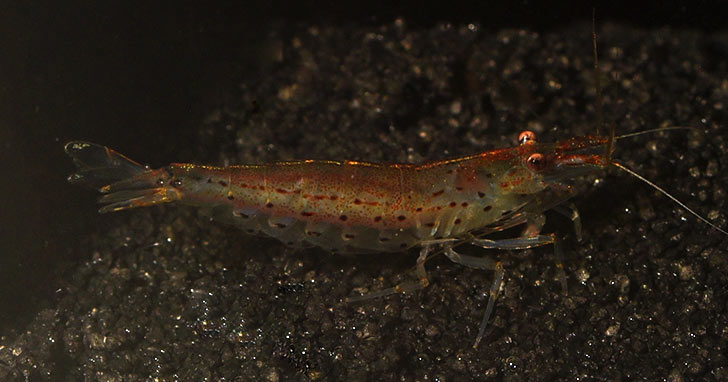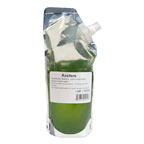
Often overlooked as a hobby, the keeping of freshwater shrimp can provide the aquarist with a glimpse into an otherwise unexplored world of freshwater crustaceans. Three of the more popular types of freshwater shrimp to consider include colorful Dwarf shrimp, filter-feeding varieties that act as mini living filters, and translucent and hardy shrimp of the genus Paleaomonetes.

filter-feeding shrimp
Characterized by their feeding capabilities, this group includes such species as the Bamboo,
Singapore Flower (Atyopsis moluccensis), and
Viper shrimp. Their claws, which are really more like fans, are designed to help them filter microorganisms out of the water for nutrients. They require an environment with plenty of water movement in order to properly feed. As an added bonus, filter-feeding shrimp act as mini bio-filters for your aquarium. Do not house them with fish such as mollies or guppies because these fish will harass the shrimp and cause unnecessary stress.
dwarf shrimp
These shrimp are among the most well known of the freshwater shrimps. Popular species in this category include
Japonica Amano, Bumblebee, Red Cherry and Red Crystal shrimp. Excellent algae consumers, the dwarf shrimps add color and vibrancy to your aquarium, from the unusual striping of the Bumblebee shrimp to the vibrant red of the Red Cherry shrimp. Because of their small size (usually less than 2"), dwarf shrimp should be given plenty of hiding options to avoid ending up as a snack for larger fishes. Easy to rear, Cherry and Crystal shrimp in particular will breed rapidly if sexed pairs exist and there is a stable food source.
paleaomonetes shrimp
Shrimp of this variety, such as the
Ghost, Glass, and Pearl, are more often regarded as a food source than an aquarium inhabitant, but these inexpensive shrimp can be raised and bred for interest also. Nearly transparent in appearance, these shrimps will benefit from additional hiding options provided by artificial décor or plants. Their small size makes them ideal community crustaceans. Paleaomonetes will accept
flake and pellet food in addition to detritus and some forms of algae, making them an accessible entry point to the world of freshwater shrimp.
Given the proper environment and numbers, paleaomonetes should breed readily. You will need to provide sexed pairings, ideal water parameters, and above all, an isolated environment for the pregnant female. Once hatched, feed the babies
rotifers, newly hatched brine shrimp, or a suitable liquid food. If left alone with aggressive larger fish, the baby paleaomonetes will end up as food.
Shrimp are hardy but can be very susceptible to changes in water quality. Uneaten food can result in unbalanced water parameters, which are often fatal to freshwater shrimp. All shrimp are sensitive to fluctuations in water parameters, so stable water quality is important to their health. Monitor water quality and have conditioners on hand to balance any spikes or irregularities.
Question:
How often should I feed my freshwater shrimp? |
Answer:
Feed sparingly. Shrimp are primarily scavengers, and rely mainly on detritus, algae, and microorganisms. Some, such as the paleaomonetes, will accept flake or liquid fish food, but avoid feeding more than what can be consumed immediately. |
Products you may find helpful...

Live Food |

Internal Filters |

Test Kits |

Artificial Plants & Corals |
|